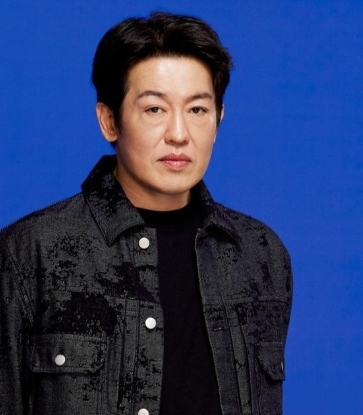In the world of haute cuisine, where innovation meets tradition, chef Jung-sik Yim of two MICHELIN star restaurant Jungsik in Seoul and New York stands as a beacon of creativity and excellence. Touted as a pioneer of modern Korean fine dining, he has brought his unique interpretations of Korean cuisine from the bustling district of Gangnam-gu in Seoul to the sophisticated precinct of Harrison Street in New York. His journey, marked by serendipitous beginnings and bold decisions, is as compelling as the dishes he crafts.
A Serendipitous Start on Maldo
Before the acclaim and MICHELIN stars, chef Yim's culinary journey began in an unlikely setting: Maldo, a small island in the West Sea of Korea. Serving in the marines, Yim found himself on this remote island, home to just ten residents. An island with no electricity and only accessible by boat, Maldo provided a unique environment for Yim to discover his passion for cooking.
When his superior officer took leave, Yim was tasked with kitchen duties, marking his first foray into the culinary world. The island's isolation came with a silver lining: an ample food budget. "I received eight times the normal food budget, which allowed me to experiment and work creatively," Yim recalls. With basic ingredients like rice, soybean paste, red pepper paste, red pepper powder, and kimchi at his disposal, he delved into various dishes, refining them with each attempt. This formative period cemented his culinary philosophy: “Make it delicious. That’s the essence of good food.”
Reinterpreting Korean Cuisine
After graduating from the Culinary Institute of America (CIA) in 2006, Yim returned to Korea, worked various jobs, and ultimately went back to New York in 2007. "During this period, molecular gastronomy from Spain gained popularity, often referred to as 'New Spanish,'" he recalls. Between 2006 and 2007, Yim worked at restaurants in New York and then spent nine months in Spain, training at Akelarre and Zuberoa. "During my time there, I created the name and concept for my restaurant, 'Jungsik,' in just ten minutes over lunch. I decided to reinterpret Korean cuisine in my own way, similar to how Spanish chefs reinterpreted their cuisine."
Jungsik’s novel concept proved to be challenging for diners to accept. "However, the market was small, and there were no alternatives, so I enjoyed a unique position. The marketing effect from that time still exists. Now, there are many such restaurants, creating new areas."
Balancing Innovation with Tradition
Yim's approach to fusion cuisine involves deconstructing traditional dishes like kimbap. “We developed a way to deconstruct kimbap. We express everyday Korean elements in our unique way, whether finer, more fun, or luxurious. This is what people like—creating and expressing the familiar in new ways.” This philosophy extends to his innovative takes on traditional foods like kimchi. “The challenge is to innovate traditional foods like kimchi. Considering that diners are more health conscious, I decided to create something like a kimchi salad, lighter and more enjoyable, reflecting the increasing interest in health and new experiences.”

Yim avoids trends, focusing instead on unique innovation. However, when it comes to fine dining, he thinks it’s something irreplaceable. “Fine dining will always hold a special place in people's hearts, capturing a certain romantic allure, hard to replace,” he remarked. “As automation and medical advancements continue, the essence of eating will shift from necessity to pleasure. Fine dining will represent more than just eating—it will be an experience.”

To him, the Korean dining industry faces oversupply, making it hard to survive unless you're in the top three percent. "The peculiarity of the Korean dining industry is oversupply. Anything good quickly gets copied,” Yim explains.
“In Korea, restaurant lifespans are generally short, but I feel great pride that we've survived for 15 years,” Yim reflects. Despite the challenges in the Korean market, Jungsik has thrived.
“For the past 10 years, my culinary philosophy has been simple: make it delicious. That’s the essence of good food,” Yim concludes. His advice to young chefs? “The basics you learn in school are crucial. Missing that foundation can set you back significantly.”

Bringing Korean Cuisine to New York City
Opening Jungsik in New York was a bold challenge. "In 2011, I went there, thinking MICHELIN would not come to Korea for at least 10 more years. I had always dreamed of attaining a MICHELIN star since I was young," Yim shares. Perseverance paid off. Within two years, Jungsik earned MICHELIN two stars, which solidified their survival.
Yim believes New Korean cuisine hasn't significantly impacted the world yet, but he feels pioneers in every country start trends. "If I hadn't done it, someone else would have. I felt something was stirring."
From his experiences in New York and Seoul, Yim learned that New York's symbolic and energetic nature boosted their business in Seoul after receiving MICHELIN recognition. The excitement in New York had a positive ripple effect back home.
"New York City has a symbolic meaning. Passing through the big gate of the city gives you the feeling that you can achieve anything. It holds a symbolic status, enthusiasm, and a sense of being the center of the world."
The Jungsik restaurants in New York and Seoul aim to have the same menu composition, but sometimes it changes due to differences in ingredients.
"There isn't much difference between the Jungsik in New York and the one in Seoul. The core menus that we create are almost the same. However, some of the dishes differ because the ingredients are different. For example, the octopus – in New York, I can get really good octopus, the high-quality octopus that I want. In Korea, the same quality of octopus doesn't exist, so there's a limit to making it with local octopus. Therefore, in Seoul, sometimes we include that menu item and sometimes we don't. The signature dish at both locations is the all-in-one kimbap."

Chef Yim Jung-sik elaborates on this point, saying, "The essence of our cuisine lies in the quality of ingredients. We strive to maintain authenticity while adapting to what is locally available." This commitment to ingredient integrity is a hallmark of Jungsik's philosophy, emphasizing that while recipes may need to adapt, the culinary experience remains uncompromised. By prioritizing top-tier ingredients, Jungsik manages to deliver a consistently high-quality dining experience whether in New York or Seoul.
Looking ahead, Yim plans to open a modern seafood restaurant by year-end. "Korea has abundant seafood resources, and while the market for meat restaurants is saturated, there's room for innovation in seafood dining."


















